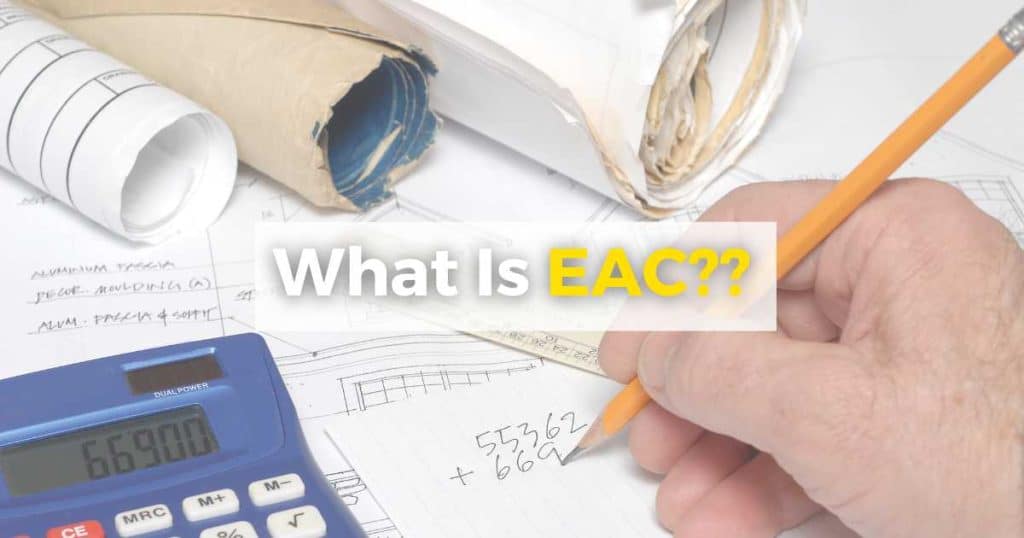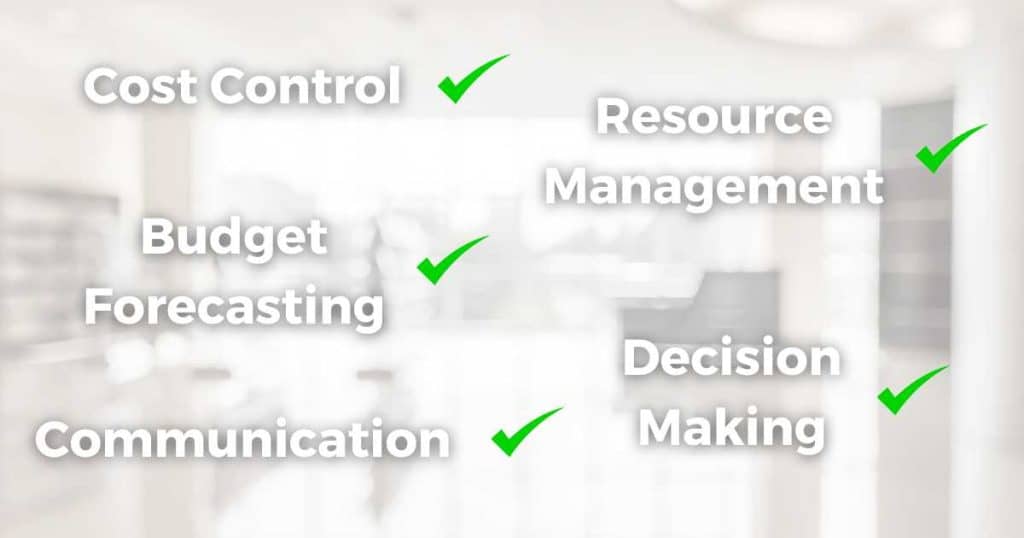What does ‘Estimate At Completion’ mean in project management?
Project management is about keeping things on track, on time, and within budget.
But have you ever been in charge of a project and wondered, ‘Will this end up within the estimated budget?’
We’ve all been there.
Luckily, this is where Estimate at Completion (EAC) comes into play! Whether you’ve heard about EAC before or not, you won’t want to miss this!
I’ll explore everything you need to know about keeping your projects financially on track with the help of EAC.
Read more: 7 Best Project Management Software For Small Business.
What Is Estimate At Completion?

This essential concept provides a forecasted total cost for your project based on your team’s current performance and expenses.
For instance, let’s say you’re building a house.
Your team has completed 50% of the work, but you’ve already spent 60% of your budget. The EAC will help you predict the total cost of the project based on this current performance!
EAC is not just a tool; it’s key to project management success, empowering project managers to stay confidently in the financial driver’s seat!
Basically, EAC helps you evaluate a project’s actual costs and estimates the remaining expenses, allowing you to predict the financial requirements for a triumphant project.
Whether managing a construction project, developing software, or launching a marketing campaign, EAC is valuable in financial planning and decision-making.
So, why is EAC so critical in driving the financial heartbeat of project-based businesses?
Read more: What Is Project Governance?
Why Is Estimate At Completion Important?
The main benefit from implementing EAC within your projects is that it allows you to forecast and adapt your projections as the project evolves.
This ensures your predictions are as accurate as possible and gives project managers the confidence to pivot if necessary!
By constantly monitoring EAC throughout the project lifecycle, you can quickly catch variations and emerging financial trends.
As a result, you or your stakeholders have the time and opportunity to take corrective action.
Read more: What Is The Project Lifecycle?
Why Don’t Businesses Use Estimate At Completion?

Many companies think EAC is too complex to understand or only relevant for large-scale projects.
But let me tell you, not using EAC can be a costly mistake, leading to budget overruns that are only detected when it’s too late!
Now, I don’t know about you, but I certainly wouldn’t want to be in that situation!
Additionally, consolidating data from multiple systems and manually calculating EAC using spreadsheets can become tedious and overwhelming.
As a result, most people give up calculating EAC altogether (or do it infrequently, which doesn’t provide enough data to manage the project proactively).
Believe me, I get it.
However, trust me, EAC is invaluable for your projects and overall business budgets when done correctly!
What Is The Importance Of Estimate At Completion In Projects?

Okay, so with all that said, why is EAC such a game-changer in project management?
Let’s find out.
Cost Control
First, EAC gives project managers the power to examine a realistic view of project costs, revamp plans, and recalculate estimates if necessary.
Ultimately, this results in better control over financial hiccups or unplanned events.
Budget Forecasting
EAC plays a massive role in painting a realistic picture of total project spending for the year based on past performance and projected timelines and costs.
This crystal ball-like power is a game-changer for stakeholders, giving them the heads-up to brace for unpredictable budget surprises!
Resource Management
Basically, having an accurate EAC is like having a secret weapon for project managers!
With EAC by your side, you can optimize resource allocation by sniffing out spare resources and pinpointing areas for cost-cutting – all without sacrificing project quality.
Communication
When keeping everyone in the loop, EAC is the secret recipe you’ve been dying to learn!
The transparency it brings surrounding the project’s financial status opens up honest and solid communication with sponsors, team members, and other stakeholders.
Ultimately, this lays the groundwork for trust and respect between everyone involved.
Decision-Making
With EAC, project managers can make smart, data-driven calls on project adjustments, scope changes, and more.
It’s all about making financially sound moves that will lead to a successful project, no matter what curveballs may stand in its way!
How To Calculate Estimate At Completion?
Calculating the Estimate at Completion (EAC) can be done through various methods.
Here, I’ll discuss a couple of the most common approaches:
- The ‘Bottoms-up’ method: Add the project’s actual costs (AC) and the forecasted remaining spend (Estimate to Complete or ETC, or Cost to Complete or CTC).
Using this method, the EAC can be calculated as: EAC = AC + ETC/CTC.
- The ‘One-time variance’ method: Best for projects that have encountered a one-time, atypical variance. This formula takes into account the actual costs (AC), the Budget at Completion (BAC), and the Earned Value (EV).
Using this method, the EAC can be calculated as: EAC = AC + BAC – EV.
Note: There are many other ways to calculate the EAC, and the formula used will depend on various factors specific to each project.
But rest assured, it’s not as complex as it may seem!
Stews Final Thoughts
So, there you have it – that brings me to the end of this brief article explaining what ECA (Estimate At Completion) is
As you can see, EAC isn’t just a fancy acronym.
It’s more of a magic wand that can transform how projects are managed!
So, if you want to maximize your project budget allocation, make sure you intertwine this essential concept into your business.
Trust me, you won’t regret it!

